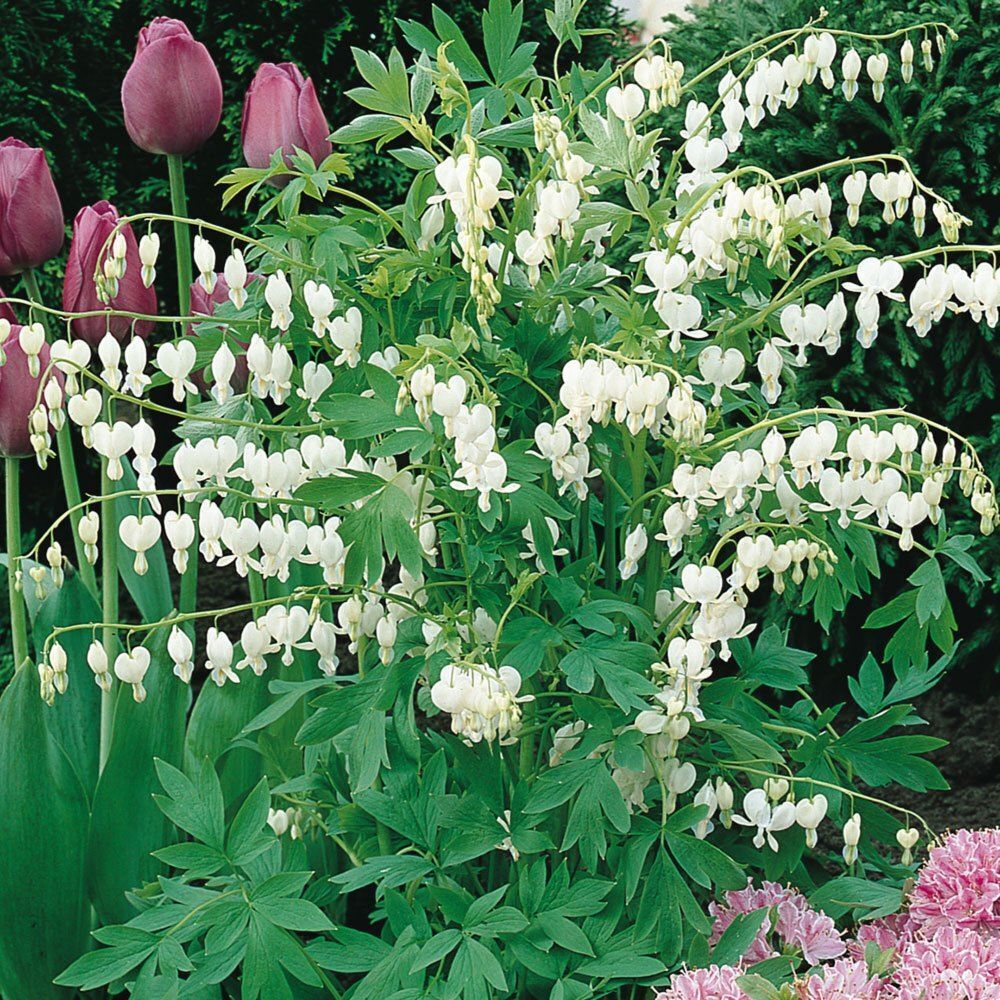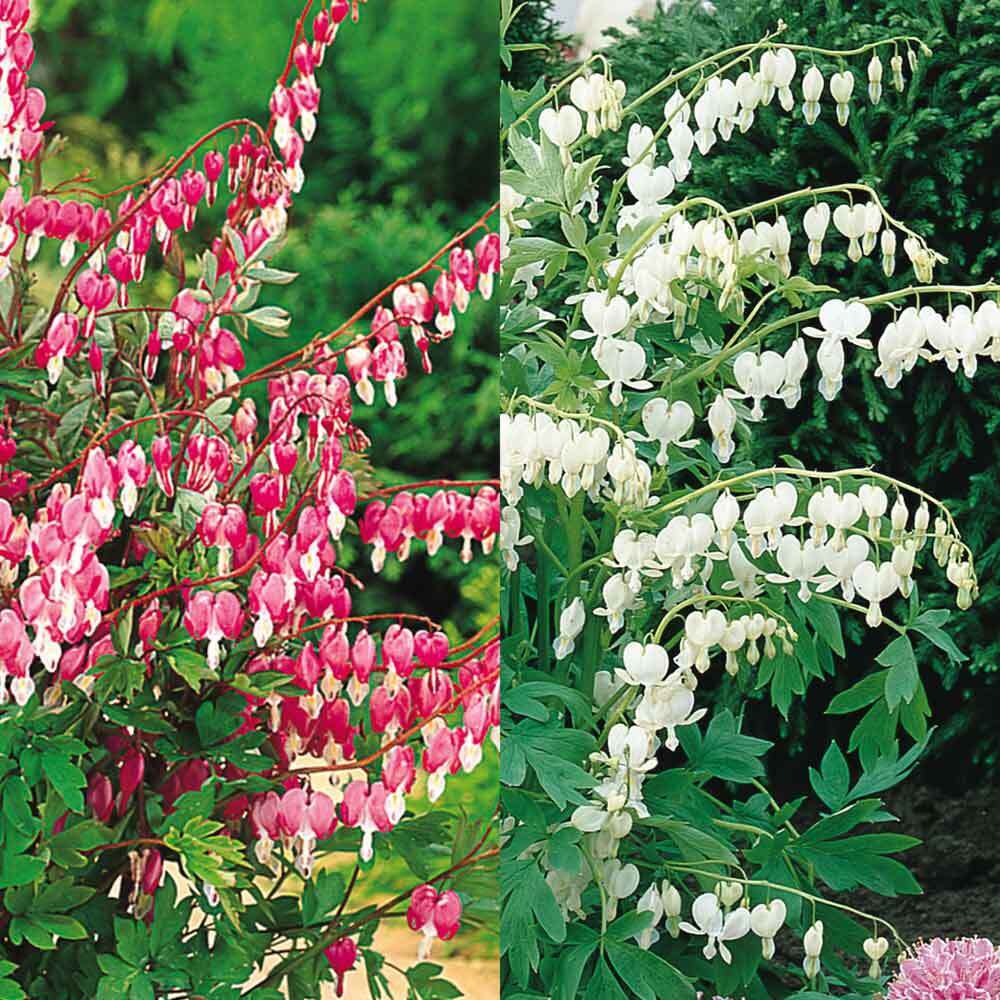

DICENTRA ~BLEEDING HEART~ PERENNIAL SHADE PLANTS ~PINK & WHITE~ PICK YOUR COLOR!
BUY IT NOW,
PRICE BREAK ON QUANTITY!!!
1 ROOT * 3
ROOTS OR 5 ROOTS
Plants are completely dormant in the Fall and Winter months and begin to show signs of growth early Spring. We are offering premium 2-3 eye root divisions and begin shipping in the month of March!
DICENTRA SPECTABILIS
Common Name:
bleeding heart
Type:
Herbaceous perennial
Family:
Papaveraceae
Native
Range: Siberia, Japan, northern China, Korea
Zone: 3 to 9
Height: 2.00
to 3.00 feet
Spread: 1.50
to 2.50 feet
Bloom Time:
April to May
Bloom
Description: White/pink
Sun: Part
shade to full shade
Water:
Medium
Maintenance:
Low
Flower:
Showy, Good Cut
Tolerate:
Rabbit, Heavy Shade, Black Walnut
Culture
Easily grown
in average, medium, well-drained soil in part shade to full shade. Prefers
moist, humusy soils in part shade. Intolerant of wet soils in winter and dry
soils in summer. The foliage usually goes dormant by mid-summer in the St.
Louis area, but may die back earlier if soils are allowed to dry out. May
self-seed in optimum growing conditions.
Noteworthy
Characteristics
Lamprocapnos
spectabilis has been a common, old garden favorite for many years. It is native
to Japan. This is a late spring blooming perennial which typically grows to
24-36" tall and to 18-24" wide. Nodding, puffy, heart-shaped,
rose-pink flowers with protruding white inner petals begin bloom in spring
before the leaves emerge. Flowers dangle downward at regular intervals beneath
long arching stems. Compound, biternate green leaves.
Synonymous
with and formerly known as Dicentra spectabilis.
Specific
epithet means spectacular or showy.
The common
name is in reference to the protruding white inner petal on each heart-shaped
flower which purportedly gives the flower the appearance of a "bleeding
heart".
Problems
No serious
insect or disease problems. Good soil drainage is essential for plant survival.
Foliage goes dormant in summer.
Uses
Best for the
shaded border or woodland garden. Because foliage goes dormant, it is best to
plant this bleeding heart through a loose ground cover or among later
developing perennials such as hostas and ferns which will fill in as the
bleeding heart foliage begins to die back.













